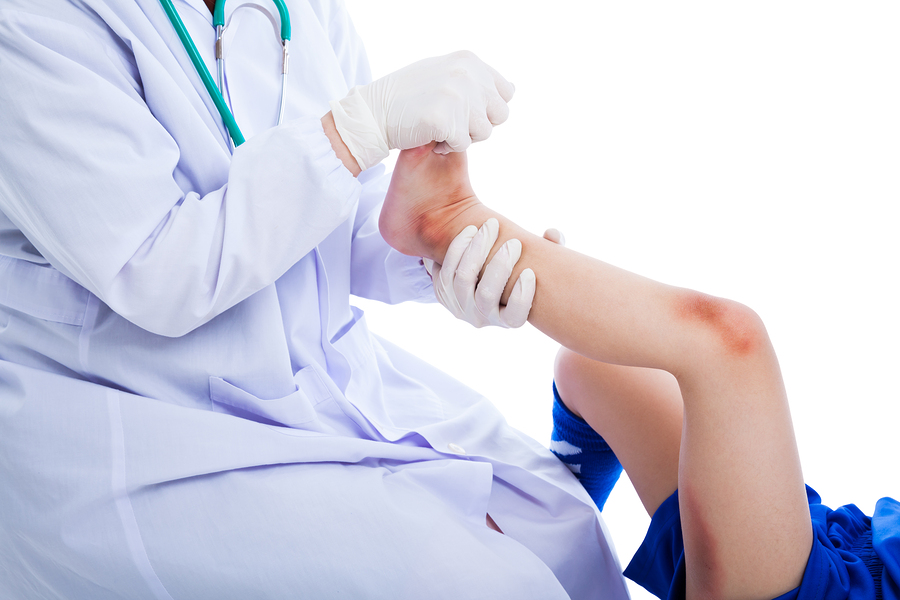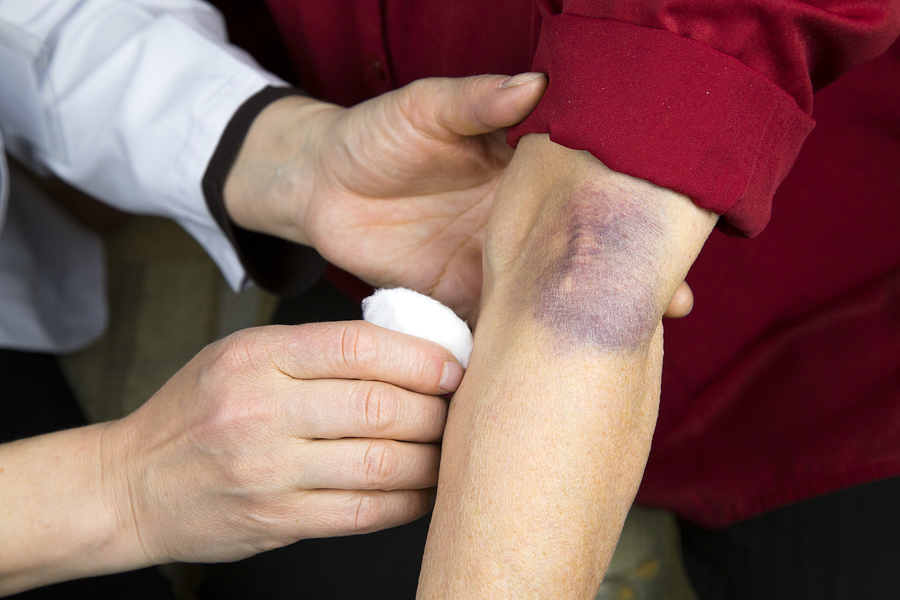The path of rehabilitation for your contusion will depend on when exactly you see your physiotherapist. The earlier you can get in to see your therapist, the more they can help!
In the initial stages of healing of a contusion, the RICE principle still applies: Rest, Ice, Compression, and Elevation.
Your therapist will discuss with you how much rest you need and how much activity you can continue to do with your healing contusion. Resting doesn’t necessarily mean sitting around doing nothing at all. Rest means to make a relative decrease in the activities that you have normally been doing or at least those activities that you know irritate your contused muscle. That being said, some gentle stretching and movement of the contused muscle also helps to encourage the fluid and damaged tissue to move out of the area and assists the newly forming scar tissue to align in the correct direction. Your therapist will discuss how much rest you need and will prescribe the proper stretching and strengthening exercises for your stage of healing. If you have just incurred your injury, you may only be asked to slowly and gently move the muscle into its full range of motion, and work to isometrically tighten the muscle (squeeze and tighten the muscle without moving the actual joint near it). Some severe contusions may require complete rest for a short period of time; minimal movement over this time will allow the recovery process to begin without causing further pain or damage.
If your injury is already well on its way to recovery, your therapist may prescribe more aggressive stretching called dynamic stretching. Dynamic stretching is used to prepare your muscle for the repetitive and more aggressive movements needed for everyday activity and sport. Dynamic stretching involves moving your limbs repetitively and with controlled speed into their end range of motion so that the muscles get put on full stretch. If you are at the end stages of recovery from your contusion then your strengthening will be more aggressive as well. You may be asked to jump, squat, or move your limbs or torso aggressively and quickly in order to prepare the contused muscle to return to the repetitive and arbitrary movements that come with everyday life or sport.
Again, depending on how far along the healing of your injury is once you seek physiotherapy, your therapist may or may not encourage ice. If you have just sustained your contusion (or within the last 48 hours), applying ice is essential to cut down on any unnecessary swelling and secondary injury to the tissues surrounding the main injury. Even if the injury occurred more than a couple of days ago, icing can still be extremely useful for the same purpose. If the injury has occurred a few weeks back or is long-standing, your therapist may suggest using heat on the injured area. Heat, when applied at the proper stage, can also help to decrease pain and assist recovery. A combination of ice and heat may also help. Your physiotherapist can give specific advice regarding when it is best to use ice or heat for your individual injury, and can advise you on the best amount of time to keep the ice or heat on during each session.
If your contusion is in an area that is easy to apply a compression wrap to (ie: calf, forearm, thigh) then your therapist will advise that you the compress the area. Compressing an injury with a wrap of some sort is emerging in current research as one of the most important things one can do, particularly in the early stages of recovery. Compressing the injured area can limit any excess swelling and bruising in the area and help to contain the area of secondary injury. Some swelling of an injury is actually required for the healing process to occur, but excess swelling can damage surrounding cells and inhibit the local muscles from working well. If the injured area gets more painful once you wrap it or if it feels too constricted, it is imperative to remove the wrap and re-wrap it a bit looser.
In the later stages of healing of a contusion, a compression wrap can continue to be useful both to limit any ongoing swelling, but it can also help to add a physical support to the injured muscle as you start to rehabilitate it. Your therapist may also suggest using tape (even from early on in the healing process of your contusion) in order to add some compression and limit swelling and bruising.
If feasible, elevating the injured area helps to drain any of the swelling related to your injury. Obviously there are some areas that sustain a contusion that can’t easily be elevated, but if you have injured an area in your limbs, elevation can assist gravity to move the swelling and bruising back towards your heart so it can re-circulate the fluid into your system. For this reason, where possible, it is best to elevate your limb above your heart in order to help the most. If it was a contusion on your thigh or calf for example, you could lie on the couch and stack pillows up to put your leg on, or lie on the floor and put your leg up on the couch. The upper extremity is harder to elevate for a long period, but even if you can rest the limb level with your heart whenever possible, it will assist the recovery of your contusion. When the area is not elevated, gravity pulls the swelling downwards into your limb and your body has to rely only on the pumping action of your muscles to get the fluid out. Since your muscles aren’t working as much or as hard due to the injury in the area, this process for removing the swelling and bruising can be slow. The force of gravity is the same reason that one sometimes gets bruised in an area that seems unrelated to the originally injured area (gravity pulls the swelling downwards). For instance, it is not uncommon to see ankle bruising after a hip or knee injury or surgery, or bruising at the back of the thigh when the original injury was on the top of the thigh.
In addition to rest, ice (and/or heat), compression and elevation, your physiotherapist may use a variety of other modalities on your contusion in order to speed its recovery. Hands on techniques such as massage or stretching may be useful, or electrical modalities such as ultrasound, muscle stimulation, laser or interferential current (IFC).
If you have a severe contusion of your lower limb or torso you may require the use of crutches in order to get around. Your physiotherapist can recommend crutches where needed and teach you how to use them. The general rule regarding when to use crutches after a lower limb or torso contusion is such that if you are limping when walking without crutches, then you should use crutches to get around. Crutches (or a cane/stick) should continue to be used until your injury heals enough so that you are able to walk without limping when not using the walking aid.






 (403) 679-7179
(403) 679-7179  concierge@one-wellness.ca
concierge@one-wellness.ca 

